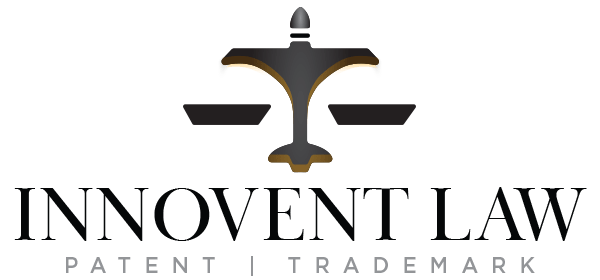Unlock Global Markets: A Guide to International Patent Protection for Tech Companies
What Does It Mean to Have International Patent Protection?
In the fast-paced world of technology, protecting your innovations is crucial. International patent protection ensures that your inventions are safeguarded not just in your home country but also globally in your target markets in various countries. This protection allows tech companies and startups to secure their intellectual property across multiple jurisdictions to prevent unauthorized use and ensure market exclusivity.
Securing international patent protection involves navigating complex legal frameworks. Understanding the nuances of patent laws in different countries is essential for tech companies aiming to expand their market reach. So, how can tech companies and startups effectively secure their innovations on a global scale?
Best Options to File for International Patent Protection for Tech Companies
One of the most effective ways to secure international patent protection is through the Patent Cooperation Treaty (PCT). The PCT simplifies the process of filing patents in multiple countries by allowing applicants to file a single international application. This application can then be used to seek patent protection in over 150 contracting states. For more information on the PCT, visit International Patent Cooperation.
Another option is the European Patent Organization (EPO), which provides a centralized application process for securing patents in European member countries. This can be particularly beneficial for tech companies targeting the European markets.

Five Elements You Need to Know to Start Your International Patent Protection
- Manufacturing and Importing in Other Countries
- When considering international patent protection, think about where your product will be manufactured or imported. Different countries have varying levels of patent enforcement and protection. Ensure your patents cover countries where manufacturing or importing will occur to prevent unauthorized production and import.
- Mapping Out Your Competitors
- Understanding the competitive landscape is crucial. Identify where your competitors operate and ensure you have patent protection in those regions. This strategy helps prevent competitors from freely copying your innovations in key markets.
- Common Goals for Patent Protection
- Clearly define your goals for seeking international patent protection. Whether it’s market expansion, preventing infringement, or increasing your company’s valuation, having clear objectives will guide your patent strategy.
- Budget and Financing Capacity
- International patent protection can be costly. Evaluate your budget and financing capacity to ensure you can cover the costs associated with filing and maintaining patents in multiple countries. For detailed pricing information, check out Patent Pricing.
- Timeline Sensitivity
- Consider the timelines involved in obtaining international patents. The process can be lengthy and can often take several years. Plan accordingly to ensure your patents are granted in time or early to support your business goals.
Does Your Tech Company or Startup Really Need International Patent Protection?
Assessing the need for international patent protection depends on several factors. If your tech company or startup plans to expand globally, international patent protection is essential. It safeguards your innovations in new markets and enhances your competitive edge through market exclusivity. However, if your operations are primarily domestic, it may be beneficial to prioritize US patent protection first. Consider your long-term business goals and market strategies when deciding on international patents.
Additional Insights on International Patent Protection
Benefits of International Patent Protection
International patent protection offers numerous benefits. It prevents unauthorized use of your inventions in foreign markets, ensuring you maintain control over your technology. Additionally, it can increase the market value of your company by showcasing a robust IP portfolio.
Challenges of International Patent Protection
Navigating the complexities of international patent laws can be challenging. Different countries have varying requirements and enforcement mechanisms. It’s essential to work with knowledgeable and experienced patent attorneys to overcome these challenges and ensure effective protection.
Detailed Case Studies and Examples
Case Study: Tech Startup Expanding to Europe
A US-based tech startup developed a groundbreaking AI technology. By securing international patent protection through the PCT and EPO, the company successfully expanded into the European market. This international protection prevented competitors from freely copying the startup’s technology and boosting the startup’s market valuation at the same time.
Example: Patent Protection for a New Software Product
A software company created a novel data encryption algorithm. To protect their innovation, they filed for international patents in key markets, including China and Japan. This strategy not only safeguarded their technology but also opened new revenue streams through licensing agreements in the protected key markets.
Strategic Insights and Recommendations
Developing a global patent strategy involves several key steps:
- Initial Assessment: Evaluate your inventions and identify those with global market potential.
- Market Analysis: Research target markets and understand their patent laws and enforcement mechanisms.
- Budget Planning: Allocate resources for international patent filings and maintenance. International protection costs tend to mushroom up rapidly! It’s not uncommon for a patent in other countries to exceed $20,000 per country over the life of a patent.
- Execution: Work with experienced patent attorneys to file international applications and manage the process.
International patent protection is a strategic move for tech companies and startups aiming for global expansion. By securing patents in multiple jurisdictions, you can protect your innovations, prevent unauthorized use, and capitalize on market opportunities worldwide. Understanding the options available, such as the PCT and EPO and considering factors like manufacturing locations, competitor mapping, and budget will help you navigate the complexities of international patent protection.
For professional guidance on patent licensing and building a robust IP portfolio, visit Patent Licensing and IP Portfolio. If you’re ready to start your international patent journey, contact Innovent Law today for expert assistance. Visit our contact page to schedule a consultation.
By following these steps and leveraging the expertise of a seasoned patent attorney, you can ensure that your tech company’s innovations are well-protected on a global scale. Don’t leave your intellectual property vulnerable—secure it with international patent protection and unlock new markets for growth and success.
For more information on design patents, explore our resources on Design Patents and Utility Patents.
